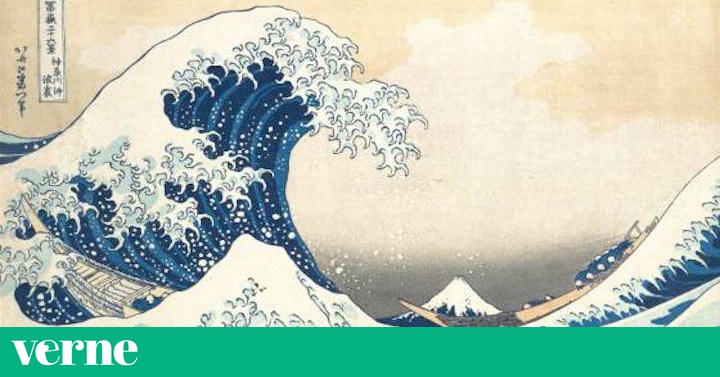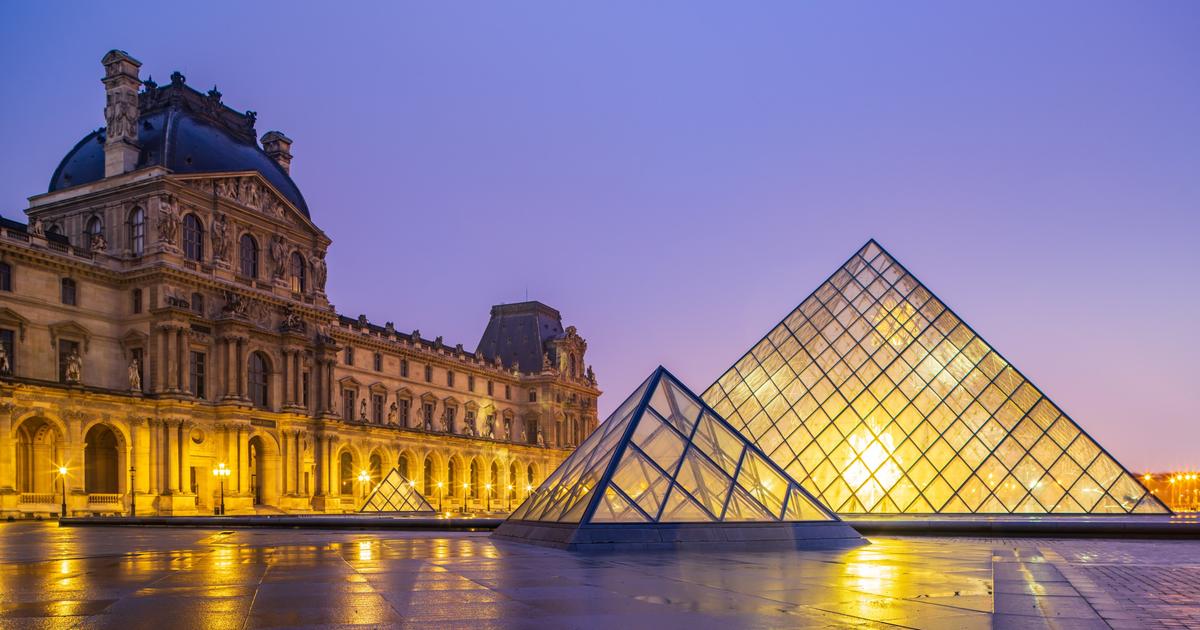The return of the Animal Crossing saga has been a real success. Without reaching two months after its launch, its new title for Nintendo Switch, Animal Crossing New Horizons , had already exceeded the almost 14 million units it expected to sell throughout its useful life, as recognized by the president of Nintendo. In this new edition, the game recreates life on a desert island totally adaptable to the taste of the player, with the only company of its animal neighbors.
A recent update included the art gallery, already present in other titles in the saga, that the player can complete with works of all styles and periods, such as the Winged Victory of Samothrace and the Starry Night of Van Gogh. That, as long as the player is able to distinguish the fakes from the originals sold at Ladino's roaming store, an unreliable fox specialist in expensive artwork and furniture. In our case, we will take advantage of this small gallery to get closer to some works that we don't normally pay much attention to: works of oriental art.
Kanagawa Great Wave
Reproduced endlessly, the Great Wave off Kanagawa has become one of the world's most famous works and as such could not be missing from the art gallery of the new edition of Animal Crossing . It is one of the highest quality samples of the ukiyo-e or "paintings of the floating world", an artistic manifestation that emerged in the Edo period (1615-1868) and that immortalizes scenes from everyday life and Japanese nature through of a print-engraving technique.
Actually, the work is part of the Thirty-six Views of Mount Fuji series , produced in the early 1830s, which immortalize Japan's highest peak in the most diverse perspectives. Although in this case the mountain has given all the prominence to the wave, as a synonym for the destructive power of nature that engulfs the comparatively tiny human being. Above left, very visible, the signature of Katsushika Hokusai (1760-1849), the author of the complete series, almost as if he were aware of the repercussion that his work would have years later.
But the passions aroused by this work are not new. Great artists like Andy Warhol or David Hockney felt real admiration for the image captured by the Japanese artist. Without a doubt the example of Van Gogh is remarkable, since he reflected in a letter to his brother the impact caused by the contemplation of this work: "The waves of Hokusai are claws, the boats are trapped in them, you can feel it."
Rooster and hen with hydrangeas
Flowers, birds and nature captured with care and attention to detail. Such are the paintings of Itō Jakuchū (1716-1800), one of the most relevant artists of the Edo period in the area of Kyoto, Japan. Initially, Itō Jakuchū followed the family tradition and worked in a greengrocery for seventeen years. According to documents of the time, this activity caused him a lot of stress, so he sought spiritual comfort in the company of some monks, who opened the doors of his cultural universe and provided him with the necessary artistic training for his creations. He did not devote himself to painting full time until he was forty.
Furthermore, Jakuchū's curious personality was reflected in much of his works. He admired and collected exotic birds, which often became the protagonists of his compositions. For this reason and for his evident taste for decoration, his works are an authentic ode to nature in bright colors that contrasts with the dominant trends of his time.
In these canons fits his work Rooster and hen with hydrangeas , included within the pieces available for the art gallery of our small island. The original work has blue flowers, but in the game there is a counterfeit version with flowers of a more violet tone. Players who purchase the second will find it impossible to donate it to the museum funds.
Xian warriors
If there is a mystery at the height of the construction of the Egyptian pyramids, it is that of the warriors of Xian, a monumental terracotta army found around the mausoleum of Zhao Zheng (259-210 BC), who is known as " the first emperor of China. " With a little luck, among the works that Ladino brings in his ship-shop every time he appears on our island of Animal Crossing New Horizons you can find one of the thousands of copies that exist.
Its official discovery took place in 1974, completely by chance, when peasants dug more than a kilometer from the burial mound that was identified as the tomb of the emperor. For obvious reasons, it soon became one of the most outstanding archaeological finds in history. Today, more than 8,000 specimens are known, slightly larger than life size, uniformed according to their rank, many painted in bright colors and all with different faces.
However, many mysteries remain to be discovered. For example, last year researchers determined that the reason that the Terracotta Army's swords, spears, and arrows are still sharp are the properties of the soil and not an age-old chromium-based anti-corrosion formula, as previously thought. beginning.
Portrait of Otani Oniji III
This dramatic print, dated 1794, is a portrait of the Japanese actor Otani Oniji III, playing the role of Yakko Edobei. The yakkos were the evil servants of the samurai, often charged with executing the violent designs of their patrons. The drama contained in the scene makes it an authentic psychological portrait that transmits to the viewer with the greatest simplicity the malevolence of the character.
The work is attributed to Tōshūsai Sharaku, a mysterious figure due to the scarcity of data as fundamental as his real name or his date of birth and death. In his biography, it is also striking that all his works are dated to a period of ten months, straddling 1794-1795. However, this has not prevented him from establishing himself as one of the great masters of Japanese ukiyo engravings- e , often starring actors from the kabuki theater. His work has already caught the attention of his contemporaries, although not positively, since his exaggerated psychological realism was not liked by everyone.
Sharaku's influence on artists such as Toulouse-Lautrec, who took a keen interest in Japanese art in general and who, at times, seems to have adopted his grimaces in the representation of some of the inhabitants of his night salons, merely emphasizes more if possible the importance of his prints and his influence even in the western world.
Houmuwu Ding
Although at first glance it may pass through one of the luxury pieces of furniture that Ladino sells, what it offers under the title of "imposing urn" is actually a recreation of the Houmuwu Ding , a huge Chinese ceremonial vase that has in all probability been converted in the largest preserved bronze piece of antiquity. The Ding are a type of ritual bronze quite common in China in the last moments of the Shang dynasty, between 1300 and 1046 a. C.
These pieces became synonymous with authority and distinction, due to the privilege of the possibility of performing certain rituals for the divinities. Thus, the degree of nobility conditions the Ding to possess. The Houmuwu Ding is specifically named after an inscription at the bottom and was commissioned by a king of the Shang dynasty in memory of his mother. In fact, the inscription would come to mean "Queen Mother Wu".
The Houmuwu ding #Chinese the largest ancient bronze ever found #history how #groovy #amazing #China pic.twitter.com/Mk3WlhBtwU
- GroovyHistorian (@GroovyHistorian) February 4, 2016Woman looking back
The impression captured in Woman Looking Back , the original name of this work, is a faithful reflection of the tastes, customs and aesthetics around the 17th century Japanese woman. But in addition to its importance as a representation of the society of the moment, it is also one of the best-known works of the artist considered the precursor of the ukiyo-e : Hishikawa Moronobu (1618-1694).
Fundamentally self-taught, Moronubu was very interested in reflecting the daily life of the society in which he lived. And he did not do it with the statism that had characterized Japanese art up to that moment, but he introduced vitality in a large part of his portraits. This work, specifically, belongs to the last years of its production and has the peculiarity of introducing color, since most of its work is done in black and white. Surely the profession of her father, dyer and embroiderer, was the one that endowed her with the necessary knowledge to reach the level of detail in dress decorations.
The dogū
The Jomon period is considered the first in the history of Japan. Although its extension is subject to debate, it is estimated that it begins in the year 14,000 BC. C. and reaches 300 BC Its antiquity did not prevent the development of high quality ceramic forms. Perhaps the most prominent manifestation is that of the dogū, figures with exaggerated human physiological features that can reach 10,000 years old. Its concept and forms are quite similar to that of the European paleolithic Venus, such as the one found at the end of 2019 in a French site.
The most widespread theory holds that the dogū would actually be representations of the female deities, mostly pregnant, so it has been wanted to see a relationship between these figurines and fertility. Within their common characteristic features, they have varied shapes. The decorative drawings and inscriptions that usually appear on the body of these figures have been tried to explain in the interest of their creators for tattoos and scarifications, although there is no way to say for sure. The peculiar shape of their eyes has even led to the development of theories that relate them to extraterrestrial life, which gives a good account of the mystery that surrounds them.
The turn of the gyroids
Although Animal Crossing New Horizons is raising passions, the most fanatical players in the saga are still missing some of its classic elements. Among them are the gyros, decorative figures that make curious sounds and that used to appear buried in the game floor, just like fossils. Some players continue to hope for inclusion in a future update.
Apparently the gyroids would be inspired by the ancient Haniwa , terracotta figures from the Japanese Kofun period (approximately between the years 250 and 538) with ritual and funeral use. These statuettes used to be buried along with the rest of the trousseau of the deceased, as a protector. Unfortunately, we do not know much more about them due to the absence of writings in this period.
* You can also follow us on Instagram and Flipboard. Don't miss the best of Verne!




/cloudfront-eu-central-1.images.arcpublishing.com/prisa/BH3XAD4LLRD4JAVWMQKATJXMDY.jpg)








